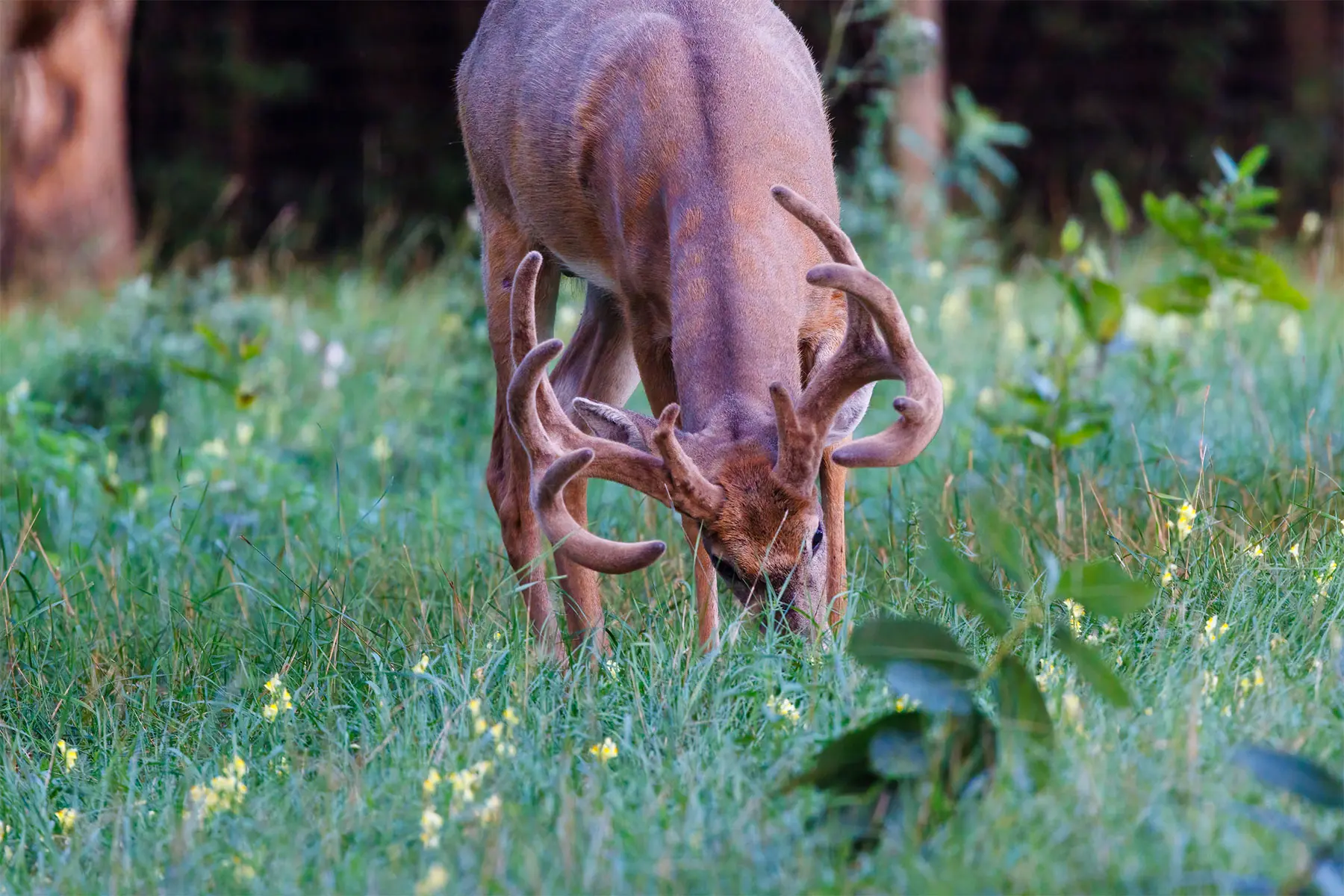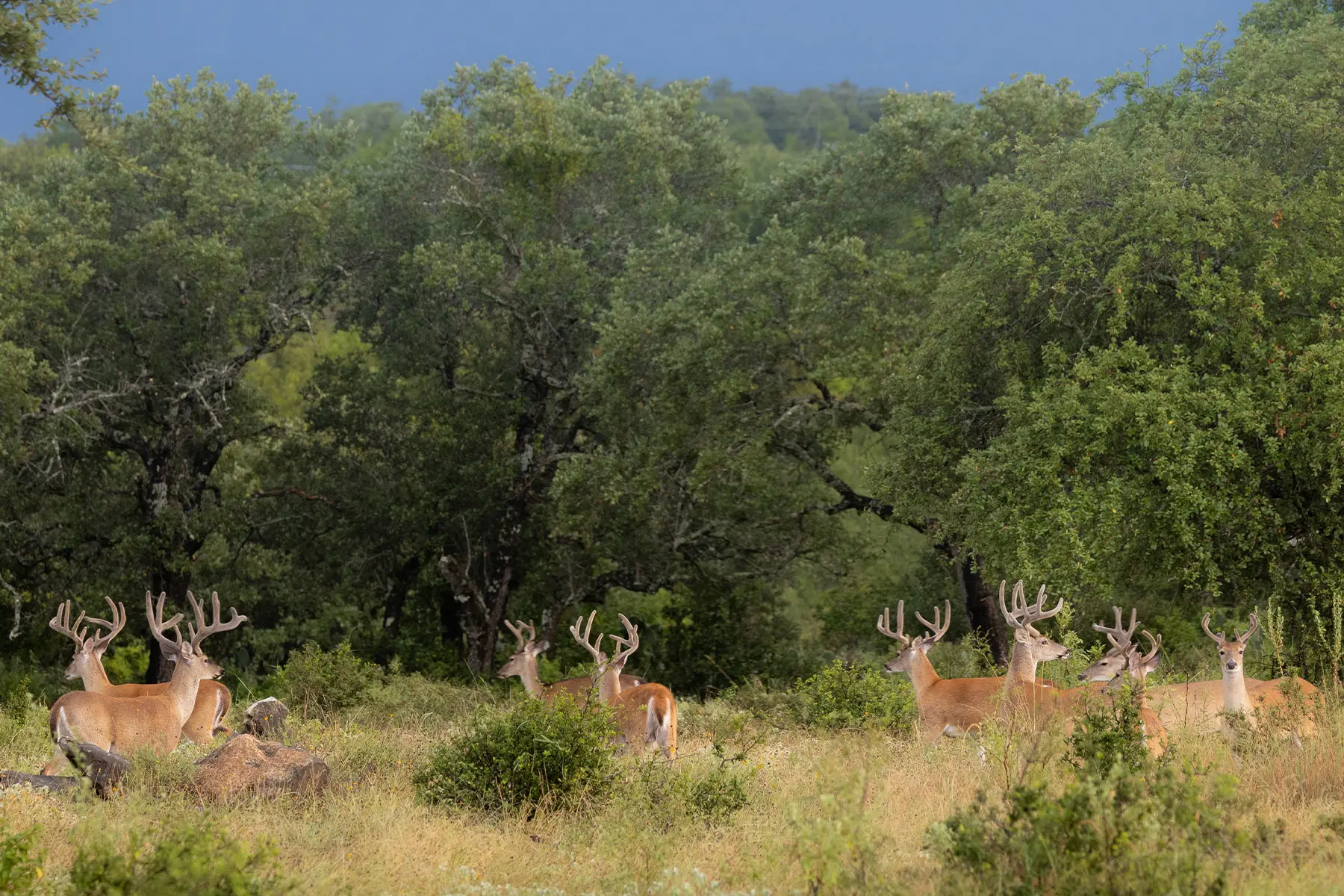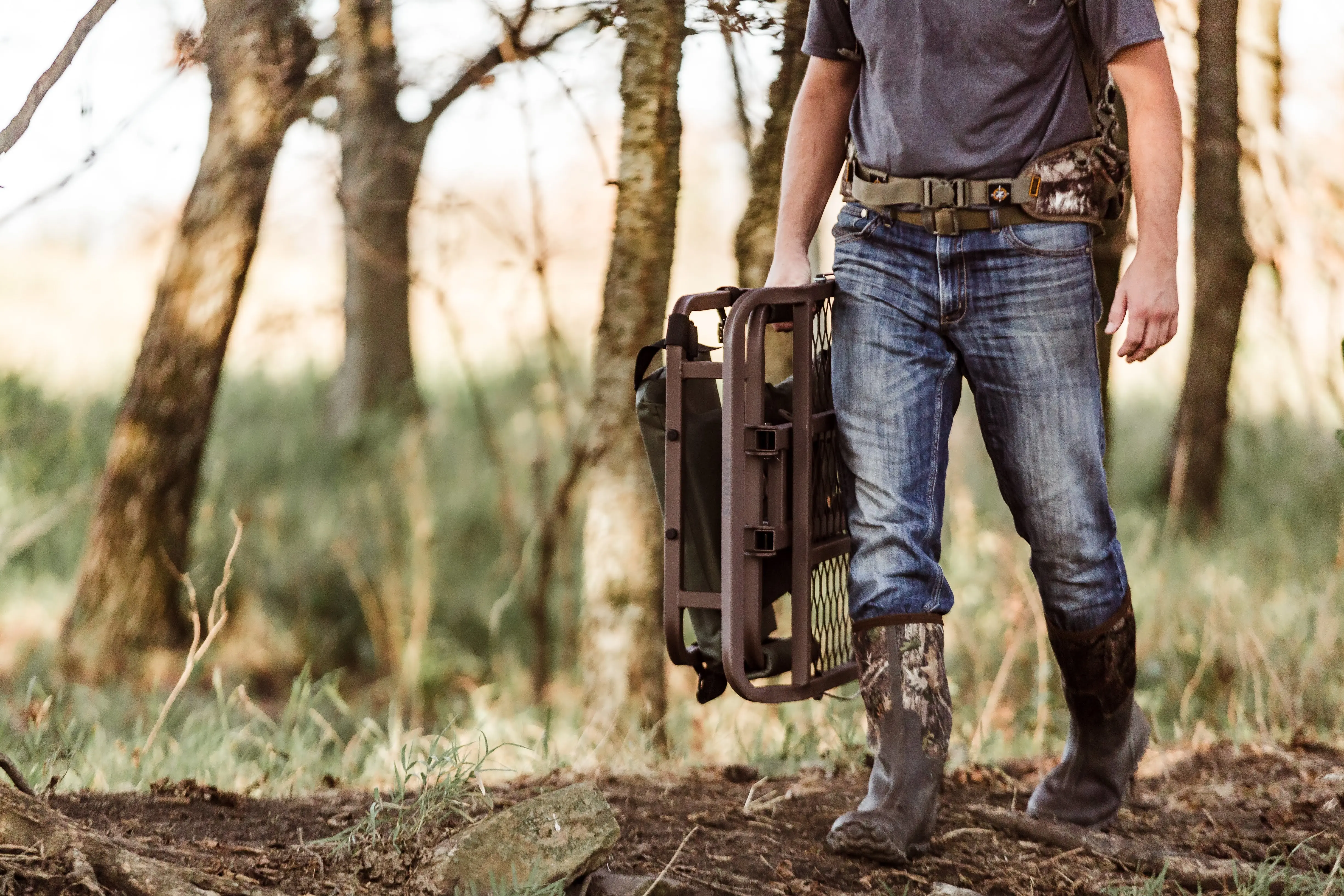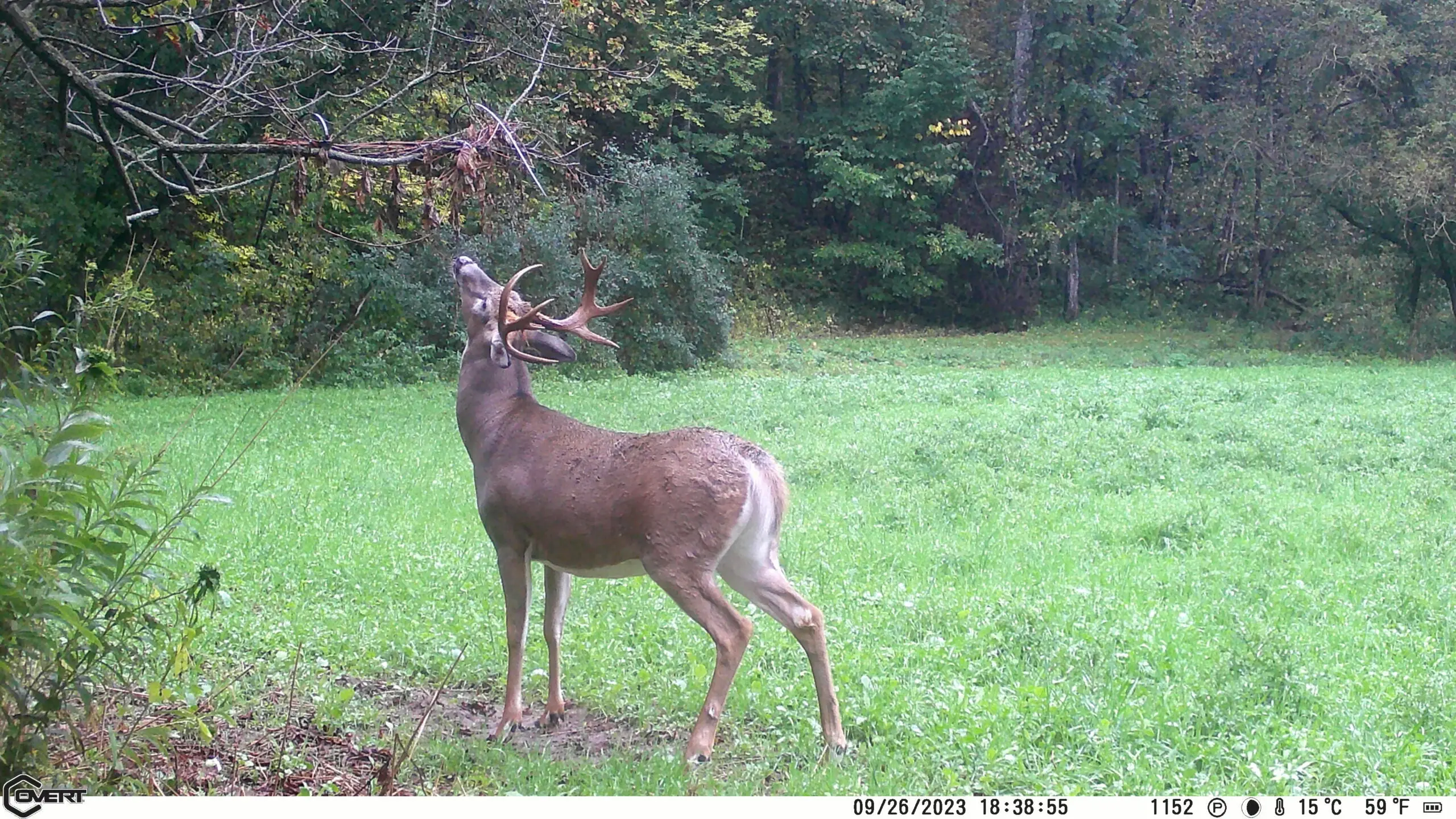It’s almost here. For bowhunters across the country, the days remaining until the annual archery deer opener are shrinking quickly, and, if you're like me, you're not even close to ready. That's okay. There's still time, as long as you get started now and make a concerted effort to stay on task until all your preseason chores are done. I know, I can be a bit of a procrastinator myself, which I why I made the checklist below in the first place. It ensures that I don't forget any critical prep work, and it sets me up for success once the opening bell rings. It can do the same for you, so here we go.
1. Scout Early-Season Food Sources

Knowing what your deer are eating is important info all season, but it’s never more critical than during the late summer and early fall. For that reason, most of your preseason scouting should focus on glassing and running cams on key food sources. In farm country, key in on clover, alfalfa, and soybean fields. In the big woods, look for soft mast—think apples and persimmons—and hard mast, like acorns. You goal now is to locate a good buck or two on a hot food source where you can set up an ambush for the afternoon of the opener.
Related: Top 20 Favorite Deer Foods
2. Find a Bachelor Group

The early archery season often finds bucks hanging together in bachelor groups, which means a good stand spot could produce multiple buck sightings, while a bad one is only good for a skunking. Even if a guy-group is starting to break up at the opener (a common scenario), knowing their favorite hangouts prior to dispersal makes for a great starting point. Barring a drastic food-source change, one or more of those bucks will likely still be in the area and will offer a great hunting opportunity. So, if you don’t have a handle on at least one bachelor group, get out there and glass more fields or hang cams in top feeding areas.
Related: 7 Things You Need to Know About Bachelor Bucks
3. Safety Check
If you’re like me, there are stands and blinds that you meant to get out of the timber last fall but never did. If you intend to hunt these spots this fall, it’s time to get out there and make sure they wintered well. Straps that keep a hang-on aloft definitely need to be checked for signs of weathering and wear. Replace worn straps with new ones, which can be ordered from the manufacturer; the nominal charge for a new set is an investment in your own safety and enjoyment of hunting.
If you’ve got permanent blinds in the field, visit them and inspect for wasp or bee nests and other invaders. One of my buddies crawled the ladder up to a blind on his Missouri property and not one but a pair of barred owls flew past his face as he opened the door. Apparently a window had flown open in the off season and remained ajar; the owls used this as an entry and adopted the blind as their own. They must have been there awhile, he said, as the floor was covered 2 inches deep with owl droppings. Situations like this are always best discovered before opening day!
4. Fine Tune Your Shooting Practice

You’ve been flinging arrows for at least a couple weeks now, right? If you have, good on you (if not, get your heinie out there and get busy), and now it’s time to tweak your shooting routines a bit to more accurately mimic hunting situations. As the season approaches, I fine-tune my practice, backing off on the number of arrows I shoot but focusing on the types of shots I’ll get in the field. One day I might shoot only from an elevated platform, or shoot just a single arrow, or walk a 3-D course I’ve never shot before—all practice that translates into the type of shooting I’ll experience in the deer woods.
5. Hang Stands and Tweak Entry Trails

If I feel really good about a spot and feel I can get in without disturbing anything, I'll hang a stand or two before the season. In other cases, I'll just pick stand sites now, then wait for the opener, get in early, and do a hang the stand right before I hunt it. But I hang fair number of my fall stands in spring or early summer, then leave them alone til the opener. The one trouble with these is that my anticipated entry trails can fall apart in the meantime; brush and vegetation can grow up, sticks and branches can fall, and leaf drop may already be in play. These factors can combine to compromise a silent entry to a setup, so in the last weeks of the preseason, I like to visit my setups and clear a path to the base of each tree. Typically the only tools I need are a handsaw and pruner, but I know guys who use steel rakes or leaf blowers to help them clear a path down to the dirt. Now's a good time to trim lanes on existing stands too.
Related: A Complete Guide to Hunting Deer from a Tree Stand
6. Make Mock Scapes

You should have several of these going already, as bucks and does visit scrapes all year round, but in my experience bucks really hit scrapes well right after velvet shed, as testosterone levels build. This makes mocks an excellent spot to gather preseason intel with trail cams, but don’t overlook their ability to lure bucks into bow range at stand setups. I basically go a little mock-crazy this time of year, establishing them especially along food plot and field edges, as well as any stand sites with suitable trees.
Here's a major tip when creating mocks: zip tie a chunk of vine (grape vines work really well and are typically easy to find) or a hank of hemp rope to the overhanging branch. Bucks adore this type of addition and will take them in their mouths or spend many minutes rubbing preorbital glands against them. In my experience, it at least doubles the attractiveness of a scrape to deer.
7. Bow Tuneup and Inspection
If you do a lot of shooting in the summer—either backyard practice or participation in 3-D shoots or leagues—you’re probably well aware of the general condition of your bow. But if you’re one of those late-to-the-dance types (been there, done it) and are just dusting the cobwebs off your system, it’s never a bad idea to stop at a pro shop for a tune-up and inspection.
Trust me, it’s way better to do this preventative maintenance now than to have a problem once the season starts. Oh, and if the techs don’t find anything major to repair, I make it a point to buy some accessories so they aren’t working for nothing.
8. Sharpen and Shoot Broadheads
Thankfully, there aren't many bad broadheads out there these days. There are, however, a couple misconceptions about even the best broadheads. The first is the claim that they “fly like field points.” This is true for some heads and some bows and their shooters. But while it’s a great ad slogan, it’s not universally true, so you need to shoot the heads with the arrows you’ll hunt with to verify it for yourself. Many expandable/mechanical heads supply a dummy head of the same weight and characteristics of the head itself, but the blades will not deploy when shot. If such a head is not included, simply wrap dental floss around the shaft of the head to prevent the blades from deploying when you take practice shots.
The other misconception is that fresh-from-the-factory heads are sharp enough right out of the box. Here again, some are, but many are not. I take a mill file or sharpening stone to almost every head I buy as soon as they come out of the box. Just a few minutes with a stone or file and your blades will be better than “factory-sharp” and ready to shoot at an animal.
9. Landowner Check-In
I’ve had the privilege of living in farm country for the better part of my life, and I hunt several properties owned by my neighbors and friends. And since I know them beyond the simple handshake agreements that grant me hunting access, I’ve been able to chat with them about a range of topics. One of the chief gripes shared by most? “When I give someone permission to hunt, it’s for that season. Not for the rest of their life,” one of my landowner buddies noted.
For many of us, this statement is only common sense, but there must be a broad swath of hunters for whom it is not, because I’ve heard this basic comment repeated often over the years. So, make it a point to pop in and visit those wonderful folk who grant us access to their land and do it before the opener itself. And make it a point to visit after the season to express your thanks. This type of thoughtfulness will go a long way to securing hunting privileges not only for this fall, but many to come. I consider it a tremendous honor when a farmer smiles at me when I drive up and says “You don’t have to ask me any more. You’ll always have a place to hunt here.” Guess what? I keep showing up and asking anyway.
10. Reread Your Regs
Reading the reg book is like Bowhunting 101 on any out of state trip, especially if you’re visiting the spot for the very first time. You’ll need to check if there are any extra requirements besides the tag you were issued for your animal; some states require the purchase of a general hunting license, or an archery stamp, or proof of passing hunter’s safety and trust me, you want all this taken care of before you even depart. But don’t neglect a scan of your home state regulations. While you may have hunted your area for years and not seen significant changes, it only takes a small tweak from a state agency to result in a new rule. And as any law enforcement officer is happy to tell you, ignorance of the law is no excuse.


